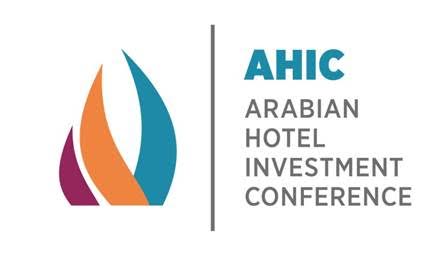
OPINION: Why No Country Operates VAT Through Sub-National Units, Experts Explain
By Tunde Alade
Tax experts have continued to share their thoughts and experiences on global best practices on the administration of Value Added Tax (VAT). One fact that runs through the conversations so far is that no country across the world administers VAT through states or sub-national units; and the reason is that VAT is operated on input-output mechanism which shields taxpayers from incidences of double taxation. Another reason is around capacity and convenience to administer VAT.
Currently, given the fact that VAT is administered centrally by the Federal Inland Revenue Service (FIRS), the VAT system in Nigeria has an in-built refund or credit mechanism which eliminates the cascading effect that is a feature of the retail sales tax. This means that the final consumer is protected from bearing the brunt of the cascading effect of retail sales tax. Tax experts advise that this shield will be removed if sub-national units take the responsibility of VAT administration.
Further to above, a finance analyst, Ashabi Vincent noted that the input-output tax mechanism in VAT also makes it self-policing. “In essence, it is the Output tax less Input Tax that constitutes the VAT payable and it is the equivalent of the VAT paid by the final consumer of the product that will be collected by the government. Although VAT is a multiple stage tax, it has a single effect and does not add more than the specified rate to the consumer price no matter the number of stages at which the tax is paid”, he said.
In a recent meeting with journalists in Abuja, the FIRS corroborated the above. According to the Group Lead, Special Tax Operations Group, Matthew Gbojunbola, the current VAT Act in Nigeria is in line with global best practices as it allows taxpayers to offset their input VAT (Allowable Input VAT) against their output VAT, to the extent that such input VAT only relates to such goods that are purchased or imported for resale or form the taxpayers’ stock-in-trade used for the production of new products on which output VAT will be charged.
He said where the output VAT exceeds the recoverable input VAT, the taxpayer is expected to remit the excess to the FIRS.
Mr. Gbojunbola explained that in the case where the input VAT exceeds the output VAT, taxpayer will be entitled to a refund of the excess after following the due process as contained in the FIRS Establishment Act. He said that such refund may not be possible if VAT is administered by states because the administration of VAT will be done by different states tax authorities.
He said: “As to the incidence of VAT, VAT is practiced on an input and output mechanism. What it means is that for a business either importing or buying products, that business will pay VAT either at the port if it importing or with the manufacturer if it buying from a local manufacturer.
“And when that business pays VAT, it is accounted for that business as an input tax, such that if it begins to sell in any part of Nigeria, and charges VAT from its own customers, it is able to rescue the importers pay either by port if it is an imported item or to the manufacturer if it was obtained from local producers.
“And this works only at the national level, VAT can’t work at the sub-national level and there is no country in the world where VAT works at a sub national level. This is because the VAT depends on the input-output mechanism.
“For instance, if a business person buys an item in Osun State and paid VAT, takes the goods to Sokoto state to sell, remember this business person had paid VAT when purchasing the product in Osun state.
“So, when selling in Sokoto state, he will be charged VAT and by the operation of the input-output mechanism, this business person will deduct the input VAT payment in Osun state, from the output charged in Sokoto state, and remit any difference to the relevant tax authorities, in this case because there is a single tax authority handling VAT, it is the same Authority that will receive the VAT in Osun and Sokoto states.
“And so, it is easy to work out the input-output mechanism, businesses won’t be short-changed; there is no issue of consumers having to pay VAT more than once.
“However, if this operating at a sub national level it will mean that when businesses are paying VAT at the state level, the business would have to pay VAT twice in two different states.”
According to him, the revenue from VAT is administered under an arrangement that allows the Federal Government to collect 15 per cent, States 50 per cent and Local Government 35 per cent.
The implication of this, according to him, is that the State and Local Government takes about 85 per cent of VAT proceeds
He said, “The VAT is not paid to the Federation Account but to VAT pool account for distribution to the three tiers of government. It is after the sharing that the portion of the Federal Government is paid to the Consolidated Revenue Fund Account.
“VAT works only at a national level but not at a sub-national level. There is no country in the world where VAT works at the sub-national level.”
He said the VAT Act differentiate between two kinds of VAT; Input VAT and Output VAT.
On the issue of capacity, analysts agree that it takes capacity to administer VAT. In line with this, the FIRS explained that it took the system about ten years to get to where it is now in terms of human capital capacity and deployment of technology for tax administration.
Mrs. Chiaka Ben Obi while shedding light on the capacity of FIRS to collect VAT said: “We are deploying technology. And what has that achieved for us? It has enables us to block leakages that were hitherto present in tax declarations and coming up with tax liabilities. And what bis the name of the technology we have deployed? It is TaxPro Max. TaxPro Max is our own in-house developed tax administration system. For the past ten years, we have been trying to achieve non-human intervention in tax administration, from end to end. We had deployed many third-party technologies for tax administration solution which left up with gaps and we were running like a mini-manual or semi-automated system.
“What we have now with TaxPro Max is that we are managing the life-cycle of taxpayer using technology. From the time a taxpayer registers up until the time ultimately the taxpayer getting their Tax Clearance Certificate. Recall that in the past, when a taxpayer is registering to get their Tax Identification Number, you typically will bring your CAC registered document, your C07, team of directors etc, we don’t do all that now.
“A taxpayer can actually go and register online and do that validation online and be integrated with the CAC. And they check the validity and the authenticity of the taxpayer. And thereafter, a taxpayer can then filing their tax returns and entering all that they need to enter. Another aspect of that has happened again as a result of deploying TaxPro Max that, what is important to a taxpayer is issued a contract and they are paid, the PAYE automatically deducts their Withholding Tax from the taxpayer and remits same to the FIRS”.
She said once the payee deducts that Withholding Tax and remits to FIRS, a receipt is automatically generated which goes to the email of profile of the taxpayer.
“Now, once that receipt is generated, the system also recognises a Withholding Tax receipt has been generated and then converts that to a Withholding Tax Credit Notes which then becomes a credit on the ledger of the taxpayer.
“When the taxpayer therefore goes to file for tax, at the end of declaration of all the requirements in all the schedules, there is a request to the taxpayer if they want to use the credit in their ledger. If the taxpayer says yes, let’s assume that the tax liability of the taxpayer is N100 million, and they have a credit of N85 million in their ledgers, the system will deduct the amount and present N15 million for the taxpayer to pay. The system will also give them the option to pay at the bank or pay immediately.
“If they click to pay at the bank, a document reference number is generated which they can take to the bank. If they go to the bank, that is what they give to the bank teller to process their payment and issue them receipt. If you also choose to pay right away, you will be presented different payment gateways, you will whichever one you prefer and then you pay online.
“So, we have been able to achieve an end-to-end processing of the life cycle of that taxpayer, from the time that taxpayer registers to the time they pay their tax liability and receive their Tax Clearance Certificates. When they make their payments, the next thing a taxpayer wants is to receive their TCC which is a statutory requirement for most of the agencies that give contracts if not all of them. So, those days of going to the Tax Office and applying for TCC are gone. Most time the Tax Controllers who approve issuance of TCC are online. So, you can give a timeline from 10 minutes to at most two days and you will have your TCC sent to your email which you registered with the Tax Office and then you can print it and do whatever you want to do with it. So that is how FIRS has been able to block leakages and we are able to generate more taxes from taxpayers because we have been able to overcome the challenges of the issues of under-declaring and underpayment”, Mrs. Chiaka Obi said.




Recent Comments